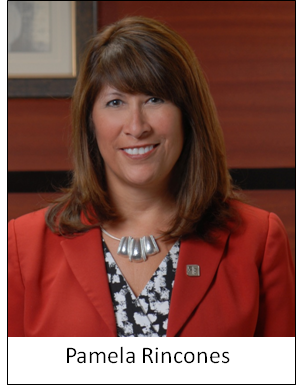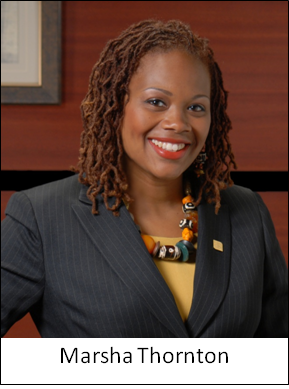Diversity and Inclusion Power Engagement at Fifth Third Bank
Fifth Third Bank is a winner of the Enterprise Engagement Alliance ‘First’ Award
- A Strategic Commitment to Engagement
- A Comprehensive Approach
- Business Resource Groups to Foster Innovation, Inclusion
- Diversity, Inclusion, and Recognition
![]() Click here to download the PDF of this article.
Click here to download the PDF of this article.
 For many companies, diversity and inclusion are challenges. For Fifth Third Bank, headquartered in Cincinnati, diversity and inclusion are opportunities to not only engage employees but to enhance customer and community relationships to drive greater performance. Demonstrating them means business. Fifth Third has a Senior Vice President with a budget and mandate to engage both employees and customers through a commitment to attract and build meaningful relationships with people across the communities the Bank serves.
For many companies, diversity and inclusion are challenges. For Fifth Third Bank, headquartered in Cincinnati, diversity and inclusion are opportunities to not only engage employees but to enhance customer and community relationships to drive greater performance. Demonstrating them means business. Fifth Third has a Senior Vice President with a budget and mandate to engage both employees and customers through a commitment to attract and build meaningful relationships with people across the communities the Bank serves.
According to Pamela Rincones, Senior Vice President, Chief Diversity and Inclusion Officer, and Marsha Thornton, Vice President and Engagement Strategy Manager, diversity and inclusion go hand in hand. “From both an employee and customer perspective, we want Fifth Third to reflect the communities it serves,” says Rincones. But, adds Rincones, “You can’t have diversity without inclusion, because you need inclusion to leverage that diversity for the benefit of employees, customers and shareholders.”
 Diversity involves the recruitment and development of employees and customers from all areas of the community; inclusion involves the one-on-one development of mutually beneficial relationships. “While there are many things all people have in common and other things they have more in common within ethnic or other groups,” explains Rincones, “inclusion is really a very individualized process that’s not just about celebrating a specific holiday but building a meaningful relationship with each person.”
Diversity involves the recruitment and development of employees and customers from all areas of the community; inclusion involves the one-on-one development of mutually beneficial relationships. “While there are many things all people have in common and other things they have more in common within ethnic or other groups,” explains Rincones, “inclusion is really a very individualized process that’s not just about celebrating a specific holiday but building a meaningful relationship with each person.”
The cause may sound noble, but the ultimate goal is better performance. According to Thornton, “the bank has realized tremendous financial benefits through actively engaged employees.” These benefits, Rincones says, include higher performance, particularly from those in key roles, and greater employee and customer recruitment and retention, involvement with the community and more activity in CSR (Corporate Social Responsibility) projects.
A review of the leading financial rating agencies all give the company’s stock a buy or a hold, citing on the positive side its strong base of business in its key market areas and excellent cost controls. Most of the negative sentiment about the company’s growth opportunities is based on economic weaknesses in some of the key regions it serves.
While Fifth Third has had a long-term commitment to focusing on people, its formal engagement strategy began in 2005, “when we partnered with Gallup for our first Employee Engagement Survey,” says Rincones. “It was designed to measure perceptions about employee retention and performance, communication, job expectations and recognition. This initial survey was the first step in a multi-phased process to make Fifth Third an employer of choice and a customer-focused organization. The first survey established a baseline so that we could take steps to improve employee engagement and measure our progress.”
Two years later, the company added three accountability questions to help measure progress and to incorporate questions from the company’s Customer Experience program. Rincones says that 91% of the company’s 19,000 employees participated. “Now we conduct an annual Employee Viewpoints survey that consists of the core Gallup Engagement Q12 questions, along with additional internal and external benchmarked indices, including Employee Experience, Customer Experience, Accountability, Inclusiveness and People Leader Effectiveness.”
Along with the survey, Rincones notes, “the bank reviews talent and assesses the performance and potential of its 4,500 managers and key individual contributors. Part of the talent assessment includes a review of engagement and the accountability scores attained. We’re also working to align all of our employee surveys with other performance metrics. For example, when we assess accountability we have to make sure it’s showing up the same way on all of the surveys, assessments and performance metrics. No one wants seven different action items, because we’re assessing the behaviors differently.”
Fifth Third was deliberate in linking inclusion with its strategic pillar of employee engagement in order to keep the relationship between the two in mind. “We believe they go hand in hand,” says Rincones. “In 2014, Fifth Third Bank was highlighted by the Gallup Business Journal for not only linking engagement and inclusion, but positioning this as a competitive advantage for both employees and customers. Gallup noted our emphasis on engagement and inclusion is a business differentiator.” Rincones and Thornton agree that there’s a qualitative benefit as well: people with limited exposure to other ethnic groups or religions often gain tremendous insight when they get to know new people and learn they have much more in common than they thought.
The company’s strategic approach to implementing enterprise-wide engagement includes diversity and inclusion as a centerpiece. Everything starts with core values. For Fifth Third, those include integrity, teamwork and collaboration, respect and inclusion, and accountability. The surveys provide a way to determine if the organization is engaging people to live those values.
The strategy also focuses on meaningful measurement, a listening culture, driving accountability and business alignment. To bake diversity, inclusion, engagement and performance into its culture requires an enormous effort that includes the assessment and coaching process outlined above and much more. The effort is driven through its organizational structure, recognition, learning programs and communication.
Thornton says that supervisors and/or managers share the survey results with their teams and work together on a team engagement plan. “The team engagement planning process enables work groups to discuss what’s important to the team and focus efforts to enhance engagement. Managers use the Gallup online system to record the teams’ plans and progress. Deploying engagement champions and engagement councils are additional ways we drive engagement and inclusion.”
Following each survey, the bank engages a Gallup principal to provide a targeted coaching and consultation with about 40 executive leaders. “Through the coaching calls, leaders share talent moves they have made over the past year specific to a leader’s performance, including the ability to drive high levels of engagement,” says Thornton. Executives, she adds, are held accountable and over time actions taken have included a change in someone’s position, reassignment, a departmental restructuring, or ongoing performance counseling.
At Fifth Third Bank, “Employee engagement and inclusion aren’t annual exercises; they aren’t check-the-box tasks or materials meant to be filed away,” notes Thornton. “Employee engagement and inclusion require a daily commitment. They are ongoing efforts that our managers lead with their teams. “
The organizational centerpiece of Fifth Third’s efforts is its Business Resource Groups, designed to bring together people with common interests to develop specific initiatives related to business excellence, employee development, membership connections and Corporate Social Responsibility.
“The Inclusion Councils (IC) and Business Resources Groups (BRG) are strategic business platforms that foster an inclusive environment to achieve superior business results,” explains Rincones. They meet monthly based on their particular initiatives and report back activities and results to regional Inclusion Councils that include representatives from each group. Senior executives help lead the process by attending meetings and assisting with specific initiatives. The impact and activities of the BRGs are shared with management and the entire organization.
The company has BRGs covering African Americans, Asian & Pacific Islanders, Individuals with Disabilities, Women, Young Professionals, Middle Easterners, Military, Multicultural, Latino, and LGBT. Because Fifth Third has a large presence in North Carolina, we asked about the bank’s position on the recent legislation in the state related to transgender use of bathrooms. Says Rincones: “While we don’t comment on non-bank legislation, Fifth Third is focused, as always, on equality and respect within the circle of our control.”
“The Inclusion Councils and BRG members implement strategic inclusion initiatives based on an analysis of diversity trends and benchmarking data,” Rincones continues. The mission of the BRGs, she says, is to:
- foster employee retention, inclusion and engagement through business networking and career development opportunities
- increase workforce utilization by developing community based recruiting opportunities
- increase sales and revenue for emerging markets by providing insight for multicultural branding campaigns and product development
- create new client relationships and enhance the bank’s reputation by effectively leveraging involvement in key community events
- increase talent optimization through career development and business networking opportunities
- improve employees’ awareness of the bank’s engagement and inclusion strategy through clear and consistent communications.
Each market or region has its own Inclusion Council and BRGs. The Inclusion Council consists of IC Chairs, BRG Chairs, IC Executive Advocates, IC Committee Chairs, IC Human Resource Advisors and IC Staff Partners. BRGs consist of Chairs, Executive Advocates and Human Resources Advisors. Depending on the size of the BRG, additional roles may be added to support the areas of focus, including career development, business networking and recruiting & retention.
Rincones sees a direct relationship between participation in BRGs and engagement – over 75% of people participating in the BRGs are highly engaged based on the Gallup surveys, a level she says is about as high as it gets in the companies measured by Gallup. Diversity and inclusion are not only key performance measures for management but are woven into training, internal communications and even the way holidays are celebrated. “We learn directly from employees the right – and sometimes the wrong – way to celebrate a community’s holidays,” she admits.
Rincones and Thornton say Fifth Third has multiple reward and recognition programs that specifically address diversity and inclusion. The company’s Spirit of the Pin award is a peer-to-peer recognition program accessible to all employees, any time, through a simple online tool. The award is based on the company’s core values outlined above, including Respect and Inclusion. Employees are invited to recognize one another and select the company value for which the employee is being recognized, with space provided for a personalized note and reference to that specific value. Electronic copies of the recognition go to the manager of the recognized employee.
In addition, the company has a program called the Horizon Award that is open to employees in multiple lines of business and functional areas (including members of Central Operations, the Consumer Bank and Customer Experience). This program recognizes high performance, customer service and commitment to the company’s core values, as well as community involvement.
The company’s Summit Awards recognize top leaders at the bank. One of the 11 award categories is Engaging Culture, and engagement and inclusion always factor in to who is selected.
On performance management, Fifth Third has a Talent Optimization goal that Rincones says is “cascaded to all employees and expressly includes workplace diversity. The goal is to ensure progress to recruit, select, develop and retain a workforce that appreciates and reflects the communities we serve.”
Since undertaking its strategic enterprise-wide engagement effort, Fifth Third has increased its overall level of engagement across the organization by around 50% -- nearly 70% are rated engaged or highly engaged. This strategic focus has earned the company three Gallup Great Workplace Awards and the Enterprise Engagement Alliance’s 2016 ‘First’ Award.
Article Sponsor
Divvy Engagement Solutions
Contact: Bob Caskey
Director, Strategic Accounts
845-306-1918















